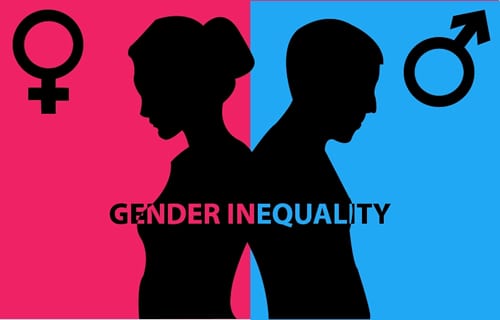The need for more female leaders has never been more critical, and there is a never-ending index of data to support this claim. Women Chief Executives make up less than 7 percent of the Fortune 500 list in America. Meanwhile the companies that boast of a higher representation of women on their boards are known to do well and outperform the organisations that do not.
Furthermore, studies have also outlined that companies with greater gender diversity, not just within their workforce but directly among senior leaders, are significantly more profitable than those without.
In recent decades, there have been calls for greater gender equality while enhancing the need to close the gender wage gap. And although tremendous strides have been made in this aspect, there is still a fundamental lack of women in leadership roles.
In Ghana, the opposite currently prevails where more men occupy leadership positions as compared to women. This is even more evident in the country’s legislature where female representation in Parliament stands at 38 out of 275, making just about 12.8 percent of the total number.
This definitely calls for a need to put more women in positions of leadership in order to create the opportunity for them to thrive. In helping to push women to the top, the boardroom is a better alternative to the bedroom in this scenario.
A report by McKinsey & Company, carried out throughout the UK, has confirmed that for every 10 percent increase in gender diversity, earnings before interest and taxes rose by a glaring 3.5 percent.
The report also indicated that women leaders have a key measurable impact on an organisation’s bottom line and as such, when women become leaders, they provide a different set of skills, imaginative perspectives, and importantly, structural and cultural differences that drive effective solutions.
In bringing a creative standpoint, a new sense of awareness will also follow to unplug the finer details that may go unmissed from the naked eye.
Yes! There may be some challenges that confront women, however, these should not be considered as weaknesses but a special opportunity for women to stand out and create a long-lasting impression for themselves.
Though women can often be perceived as more emotional and less decisive than men, they, nevertheless, bring more diverse physical, mental and emotional experiences to everyday conversations.
In 2019, the percentage of women in senior management roles globally grew to 29 percent, the highest number ever recorded. In 2020, this percentage remained the same.
While this can be considered positive news, women just entering the workforce will need to be inspired by other women who are currently smashing their role as a leader in the workplace. Once achieved, it can carve a direction for all young aspiring women leaders to increase the global percentage and break new records.
Why more women must be in boardrooms
A meta-analysis comparing male and female leaders identified that female leaders were more transformational. They demonstrated more contingent rewarding behaviour than the two-dimensional actions (active and passive management) presented by male leadership.
Women are able to make bold and wise decisions as leaders; this helps make the team environment less authoritative and more cooperative, bringing a family-like feel to the team. This boosts teamwork across the organisation and helps implement a new culture within the business.
Communication is said and known to be among a woman’s strongest skill. Female leaders will utilise this power to enhance meaningful conversations with employers, co-workers and partners, thus, creating an open communication stream that creates a sense of clarity.
Within a more diverse workplace, the more likely creative ideas are going to be presented. This helps fuel growth and helps create more sustainability within an organisation. Diversity in the workplace should not just prioritise women, instead, it should have a fluid combination of both genders throughout the organisation.
Women leaders will bring skills, different perspectives, and innovative ideas to the table, but these three combined will help create new perspectives that lead to better decision-making as a whole for the business.
Especially for the younger generation, the power of role models cannot be overlooked. Regardless of a person’s gender, everybody needs someone who will guide them to progress in their careers. Specifically, for mentoring and coaching young talents, women leaders are better mentors than men.
Something that can often be overlooked is that the gender pay gap can be transformed into a gender opportunity gap. It has been seen that when males and females start their progress from scratch, men are usually offered more opportunities leading to higher-paying positions.
However, employing more women in leadership roles cannot only provide the benefits listed already, but it can help achieve a wider goal and close the pay gap more effectively.
With the above expositions, let us just imagine a gender equal world. A world free of bias, stereotypes and discrimination. A world that is diverse, equitable, and inclusive. A world where difference is valued and celebrated. With the above in mind, we can forge women’s equality to collectively #BreakTheBias.










